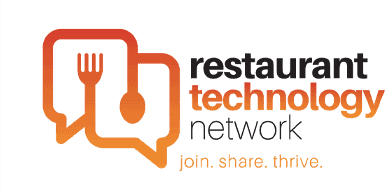Today you can find digital menus at fast casual spots like McDonalds, coffee shops like Starbucks, and even some fine dining establishments, like Ruth’s Chris Steakhouse, which installed tabletop digital menus in reaction to the COVID-19 pandemic as a way to limit contact.
But digital menus are also online, and allow you to interact with customers through their own mobile devices.
With people preferring contactless everything, digital menus can be a valuable resource that not only can protect social distancing protocols, but reassure customers you’ve put their health and safety first.
They also can be a smart investment for your bottom line.
Besides eliminating the costs associated with creating and printing single-use menus, these interactive, adaptive screens allow restaurant owners to better communicate with customers and can be a boon for sales. Here are 8 tips on how contactless menus can help improve restaurant sales:
- 1. Easy to Update
Paper menus or large static menu boards can be beautifully designed but they can’t be easily updated—unless you’re OK with taking a Sharpie to 86 an item. Digital menus, on the other hand, allow restaurant owners to easily adjust and update menus giving patrons more choices while increasing their interest in your evolving options. - 2. Enticing Images
Some digital menu software is so elaborate that you can incorporate images. And as every good restaurateur knows, people eat with their eyes. Tempt their palate by giving them a preview of what’s to come. - 3. Linked Devices
With some digital menu platforms, you have the option to update across all monitors and devices. This means that an owner doesn’t need to spend precious time updating many menus and signs, but can simply make one change that’s then broadcast across all devices. - 4. Detailed Descriptions
Where a paper menu is limited by space, a digital menu can offer more room to describe certain dishes. Be it in static font that pops up when an item is ordered, or in movable type that scrolls across the screen, good descriptions can help clarify questions and even make some menu items more appealing. - 5. Nutritional Data
In a study completed by researchers at Penn State and at the University of Tennessee they found that “Customers are more likely to frequent restaurants that provide both healthful foods and nutrition information.” With that in mind, businesses can incorporate nutritional information in their digital menus. In fact, “participants were significantly more likely to perceive that the restaurant was socially responsible.” Which is to say, including nutritional data could provide two ways to increase positive sentiment, by promoting a socially responsible image and giving health-conscious clients the assurance that they’re eating healthy. - 6. Recommendations
Rather than spend money on payroll costs to have more staffers on hand to explain menu recommendations and item swaps — like a NoBull burger instead of a black bean burger — digital menus give restaurant owners the option to include those choices. This can also include additions diners can make to their meal, such as the option to add an egg, avocado, or onions. - 7. Option to Upsell
Installing an intelligent menu can help improve your upsell. For instance, instead of just showing an image of your juicy burger, why not post an image of it with some hot fries and a shake? Without telling the customer to buy those additional items, you’re visually tempting them and allowing them to make the choice without the hard sell of a staffer. - 8. Reduce Error
Advanced digital menus can display a customer’s order as they call it out. The benefit of this is it allows the client to fact check what they’ve requested, helping the restaurant avoid errors and costly comped items resulting from mistakes. Plus, displaying the customer’s order can give the waiter or clerk one more opportunity to upsell when reviewing the order.
In today’s socially distanced, busy world, digital menus can provide a safe and efficient way to handle restaurant order transactions. But that’s not limited to stand-alone monitors. Restaurants also have the option to employ on-premise mobile menu browsing with tools like OneDine. Using this platform, guests can not only view the menu from their phone, but they can use it to request a server, access in-store offers, and even filter offerings to appeal to their personal tastes. Plus, they can use rewards easily which encourages future visits. Digital menus aren’t the wave of the future, they’re here now and can start improving sales immediatley.





